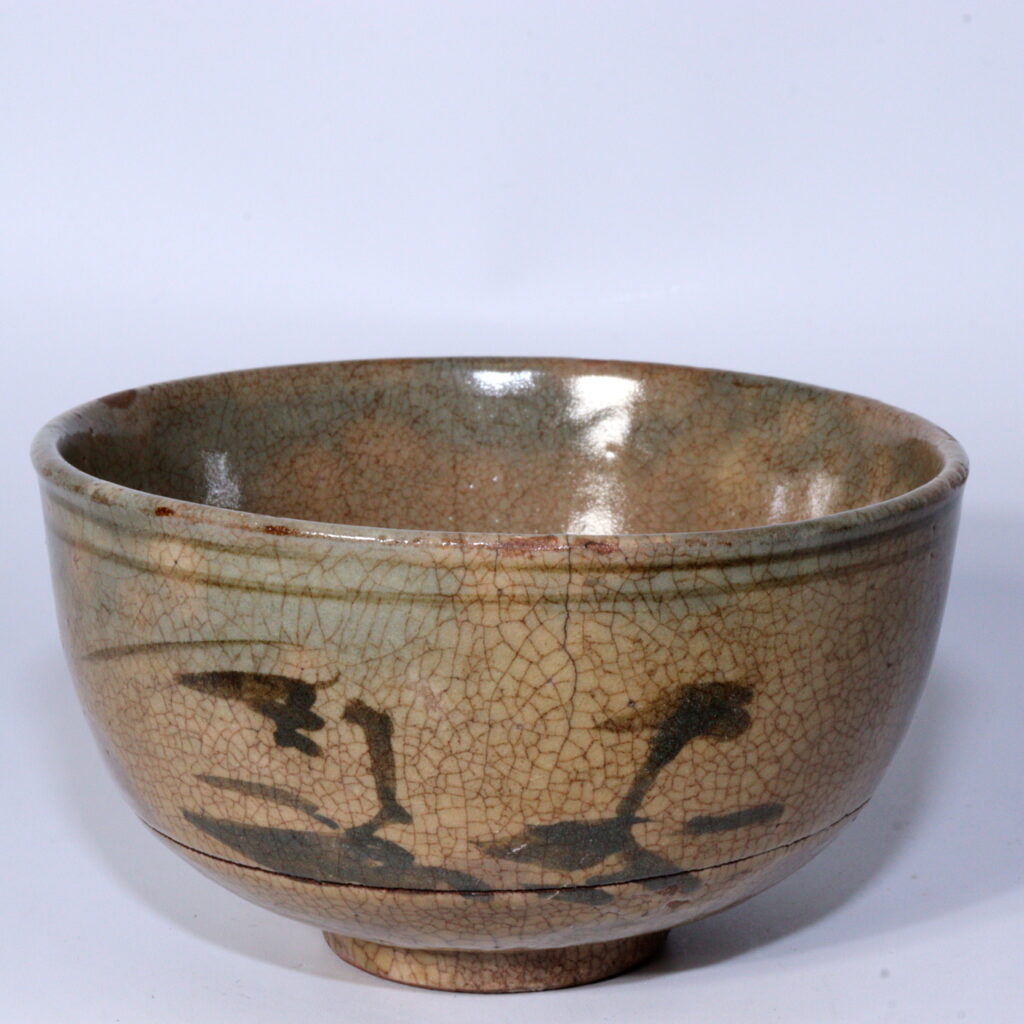
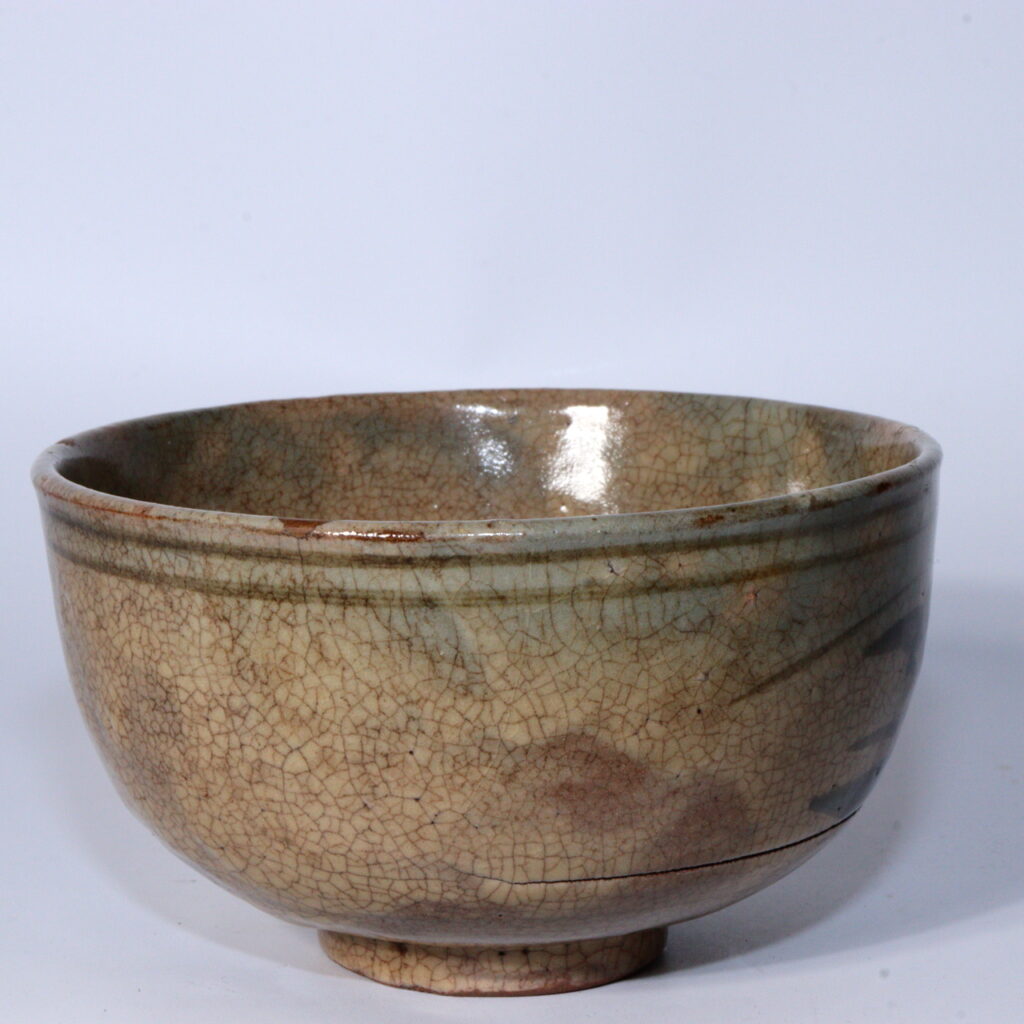
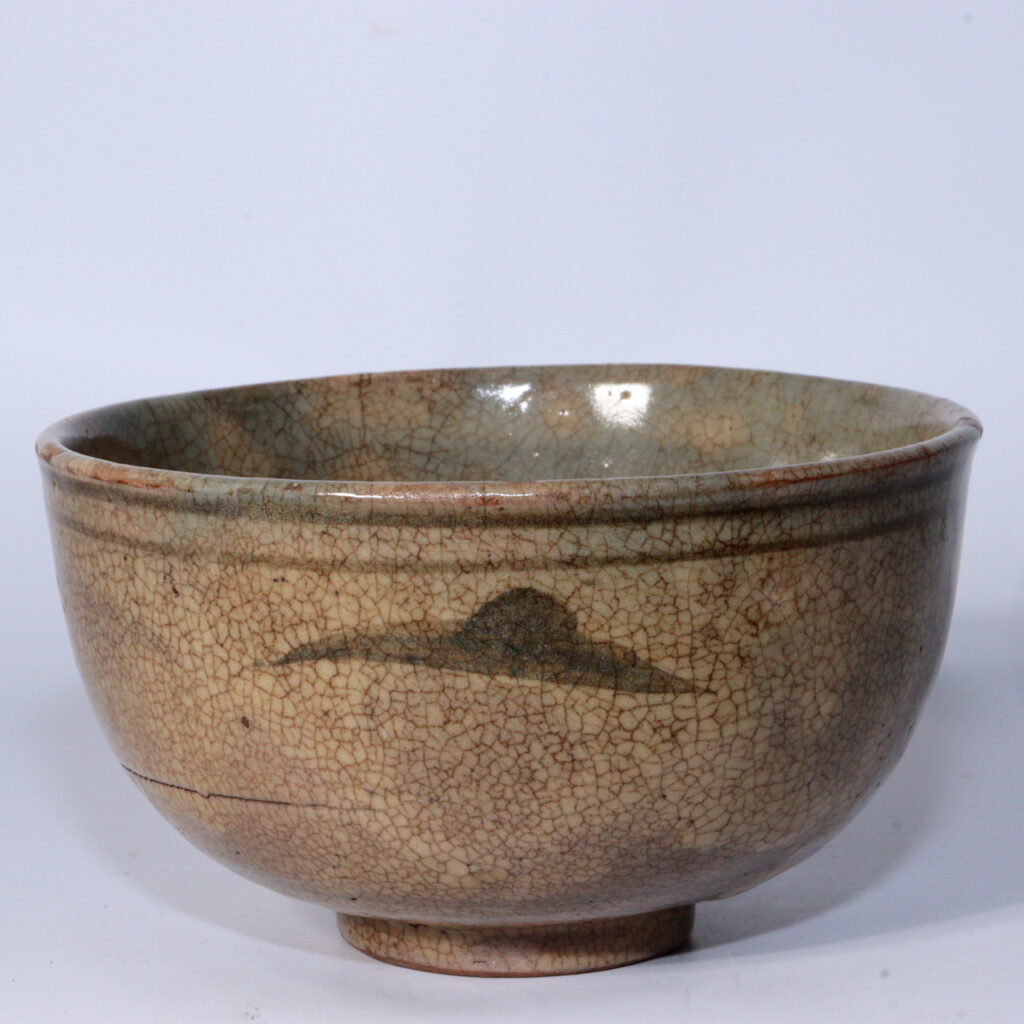
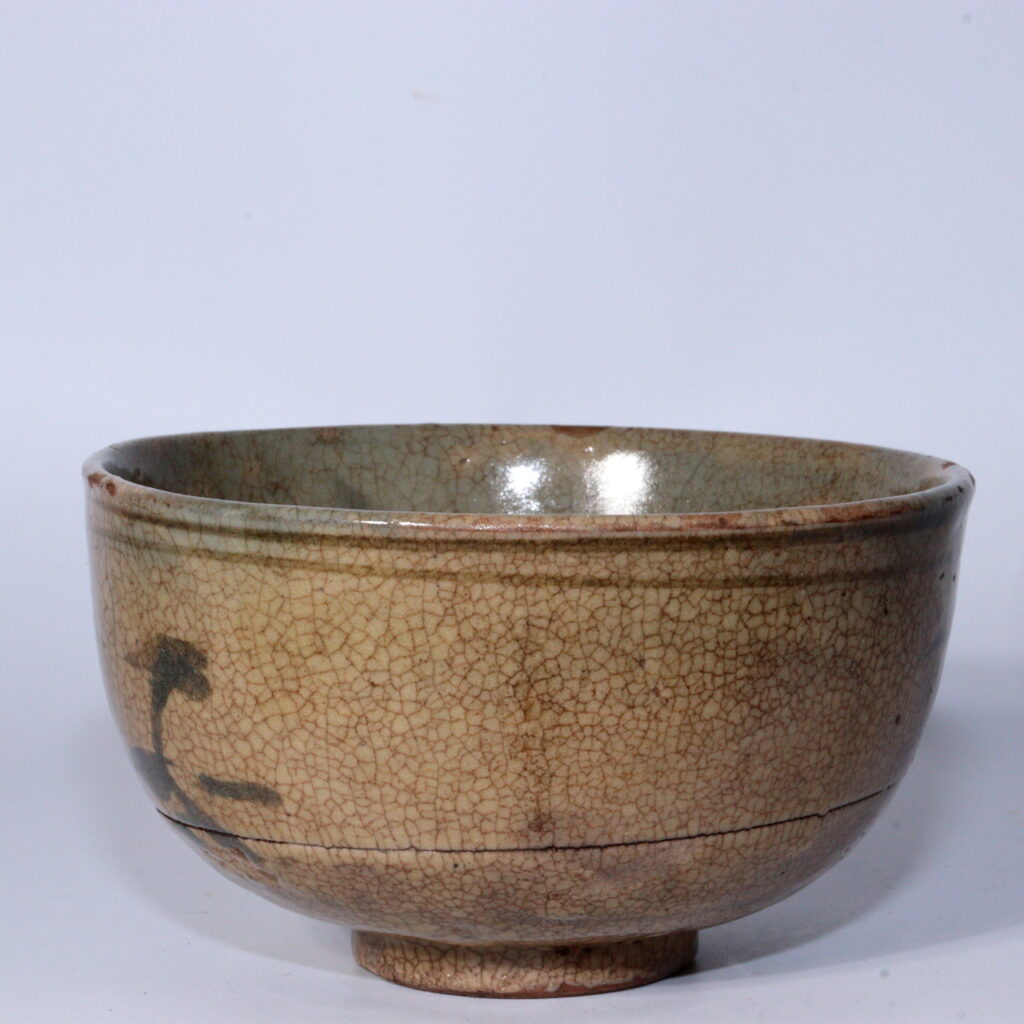

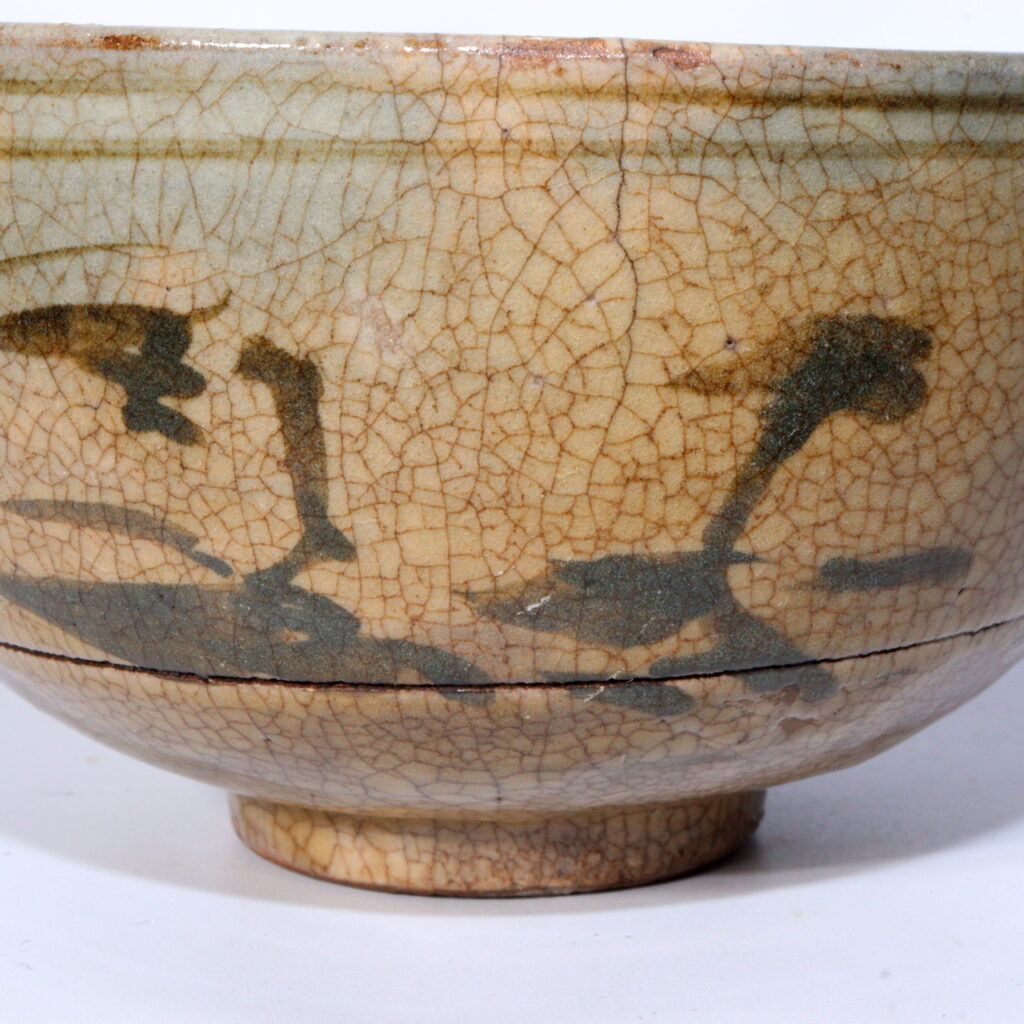
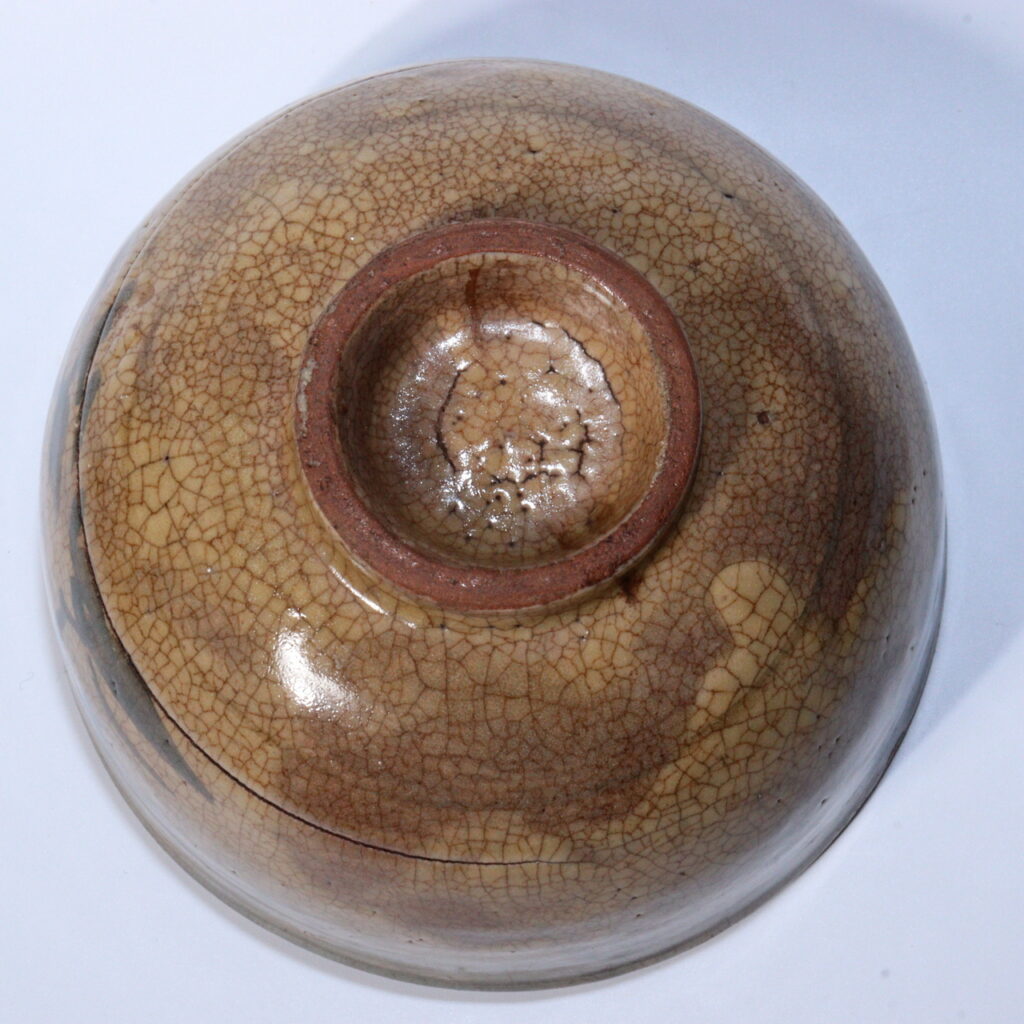
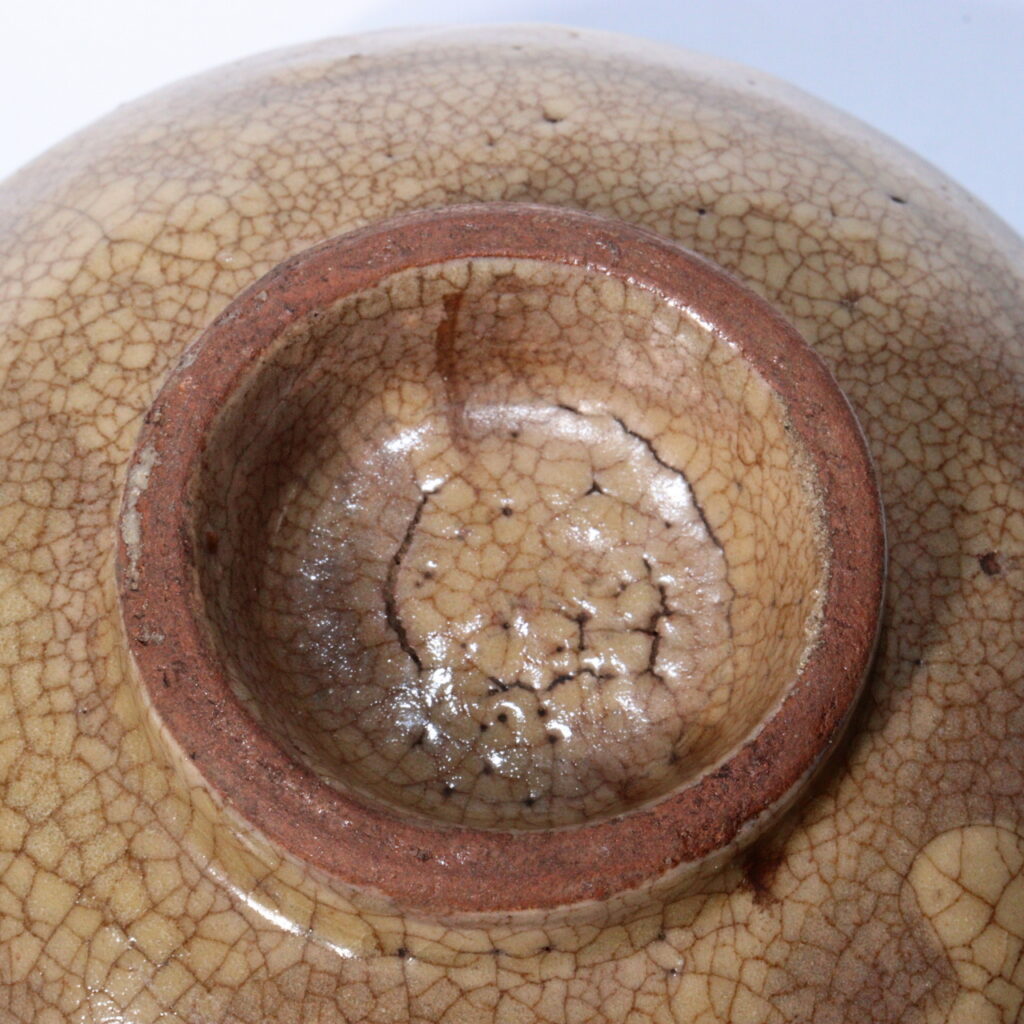
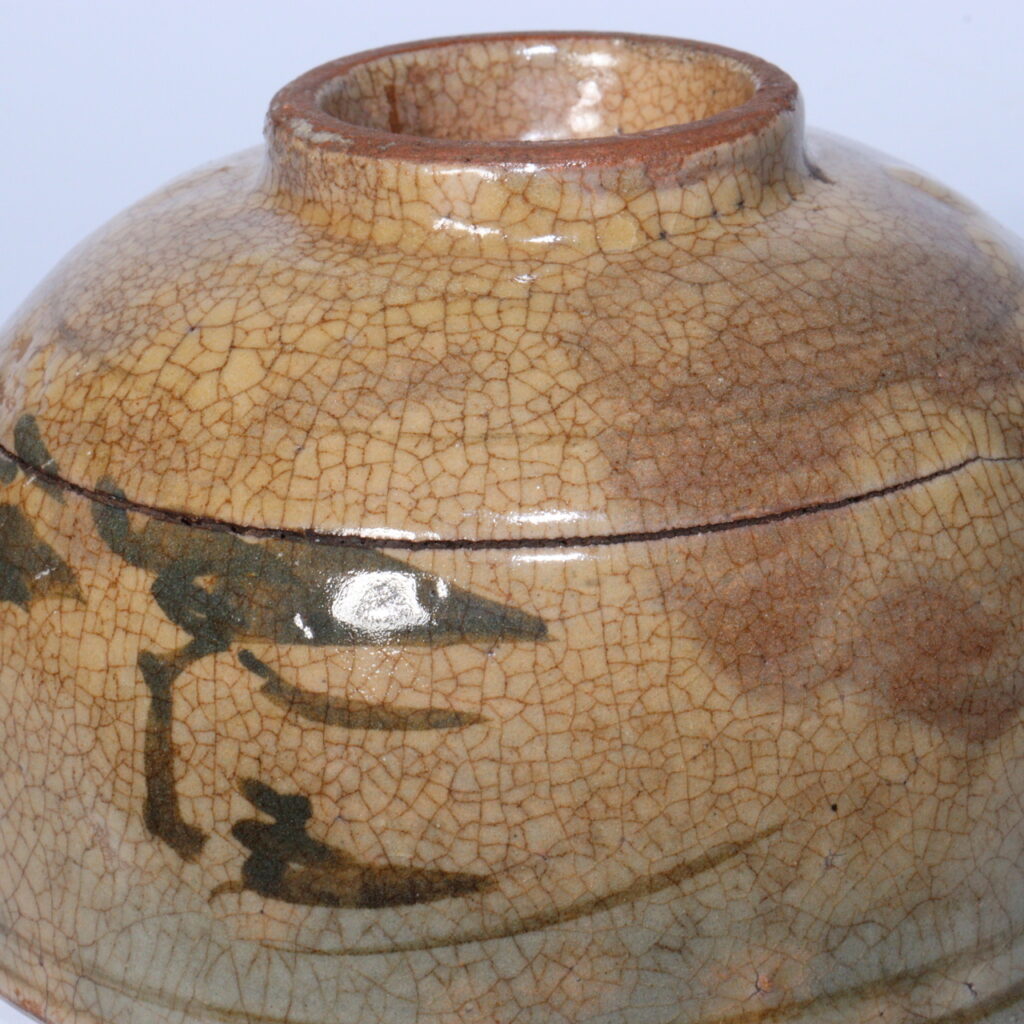

A vessel that holds the quiet heartbeat of the tea ceremony
Among the refined world of Japanese antiques, few items capture the spirit of simplicity and quiet beauty like an old Karatsu tea bowl. This mid-Edo period example, fired at the historic Kihara Kiln in Kyushu, embodies the aesthetic of wabi-sabi—the appreciation of imperfection, impermanence, and natural grace.
The Story Behind This Bowl
Karatsu ware (Karatsu-yaki) has long been cherished by tea masters since the Momoyama and Edo periods. Known for its rustic warmth and soft, natural glazes, Karatsu ceramics reflected the Japanese pursuit of understated beauty that arose in contrast to the ornate Chinese porcelains of earlier times.
The Kihara Kiln, located in present-day Saga Prefecture, was one of the renowned production centers of Old Karatsu. Its pieces were prized not only for their aesthetic balance but also for their deep connection to the tea culture (chanoyu). Each bowl was designed to harmonize with the quiet rhythm of the tea ceremony, inviting introspection through touch, sight, and silence.
This particular bowl dates from the mid-Edo period (18th century) and would have been used in daily tea practice. Its soft, muted glaze—subtly aged over centuries—carries the marks of time like ripples on still water. Fine kannyu (crazing) patterns weave across the surface, forming a delicate network that enhances its organic character.
The Beauty and Highlights of This Piece
One of the most striking features of this Karatsu tea bowl is the gentle balance between form and glaze. The slightly everted rim, shallow curvature, and firm kodai (foot) reflect the refined yet humble spirit of Edo-period craftsmanship.
Across its surface, hand-painted brush motifs evoke landscapes reduced to their essence—perhaps waves, grass, or distant hills—leaving interpretation to the viewer. The reddish-brown blush near the base results from natural oxidation during firing, adding depth and warmth to the pale, crackled glaze.
A faint restoration near the rim tells of its long life. Rather than detracting from its beauty, this repaired section resonates with the kintsugi philosophy—finding aesthetic and emotional value in mended imperfections. It is this very human trace that connects the bowl to both maker and user across the centuries.
Value for Collectors and Connoisseurs
For overseas collectors of Japanese ceramics, Old Karatsu ware represents one of the most profound expressions of Japan’s aesthetic heritage. Each piece embodies a moment in the evolution of Japanese pottery—bridging Korean influence, Zen thought, and the minimalist ideals that would later shape Meiji-era ceramics and even modern design.
Owning such a bowl means more than possessing an antique; it means holding history in one’s hands. It recalls the quiet of a tatami-lined tea room, the rising scent of matcha, and the fleeting beauty of shared presence. For connoisseurs of Japanese tea ceremony art, it is a work that invites daily reflection.
Conclusion and Product Link
This Old Karatsu tea bowl from the Kihara Kiln stands as a poetic testament to the timeless beauty of Japanese ceramics. Its subtle tones, soft glaze, and delicate crackle surface embody the perfect balance of imperfection and grace—a harmony deeply rooted in Japan’s cultural heart.
You can view this piece here:
👉 Koedo Sun Art – Product Page
If sold out, please explore our other Japanese ceramic collections:
🔗 See more from our collection of Japanese antiques
Category: Item Stories
Tags: Japanese antiques, Karatsu ware, Edo period, Kihara kiln, tea bowl, ceramic, kintsugi, Meiji, wabi-sabi, tea ceremony